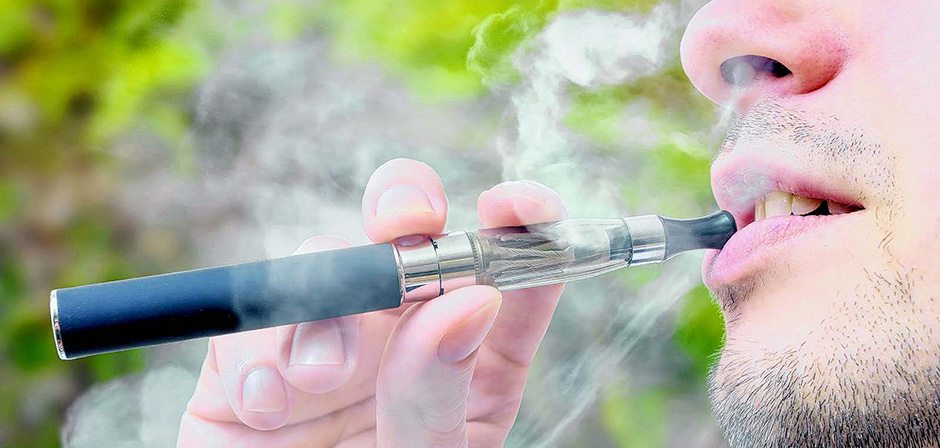
[This piece was written by Theresa Zubretsky, Community Relations Liaison with the Capital District Tobacco-Free Coalition, St. Peter’s Health Partners.]
As school lets out, temperatures rise and daylight stretches, the outdoors beckons. Fortunately, more of our region’s residents can enjoy clean outdoor air as a growing number of communities have made their parks and recreation areas tobacco-free. This summer, for the first time, Albany County’s parks and rail trail will not only be tobacco-free, but also e-cigarette-free for the health and enjoyment of all.
In only ten years, e-cigs have grown to a more than $3.5 billion dollar industry in the U.S. There are a wide variety of e-cig products on the market, which go by many different names including “cig-a-likes,” “vape pens,” “mods,” and “atomizers.” Some require the use of an e-liquid solution which is often candy or fruit flavored; others are disposable; some rechargeable; most contain nicotine.
One thing all these products DO have in common is that, until 2016, there was no regulation of their production, sale or marketing. The only information available to consumers came from the e-cig manufacturers, who made unfounded claims about e-cig use as a “safe alternative” to traditional cigarettes and about the “harmless water vapor” they produced.
Research is still emerging about the specific health risks of e-cig products, but some serious health risks have been established. One of the most obvious concerns for users is the risk of developing addiction to nicotine which is linked to cardiovascular, respiratory, and gastrointestinal disorders.
In addition, certain flavors of e-liquid solutions contain diacetyl which can cause a disease commonly known as “popcorn lung.” Popcorn Lung, or bronchiolitis obliterans, is an irreversible lung disease that causes coughing and wheezing, as well as shortness of breath. One Harvard study revealed 75 percent of all e-cigs had diacetyl within their e-liquid solutions.
And the industry’s claim that the secondhand exposure to vape clouds is merely exposure to “harmless water vapor?” Not so. Nicotine, heavy metals and tiny particles that can harm the lungs have been identified in secondhand e-cigarette aerosol.
Based on what we already know about the dangers of e-cigarette use and exposure to secondhand aerosol from e-cigarettes, we recommend:
- If you don’t currently use tobacco products, including e-cigarettes, don’t start.
- If you currently use tobacco products and want to quit, talk to your doctor about FDA-approved smoking cessation products.
- If you are a parent, talk to your children about the dangers of e-cigarettes and the negative impact on their health and well-being.
St. Peter’s Health Partners (SPHP) is committed to cleaner outdoor air surrounding their facilities for the health of its employees, patients and their families. To that end, SPHP has updated its existing tobacco-free policy to include all electronic smoking devices, thus making all of its properties free from all tobacco use, including e-cigarettes.
For more info on e-cigs and quit resources, contact Anne Lawton, RN, community liaison for St. Peter’s Hospital Cancer Care Center, at Anne.Lawton@sphp.com or (518) 525-1827.





